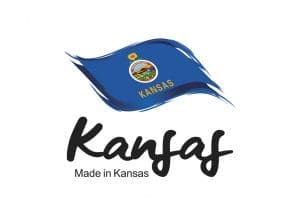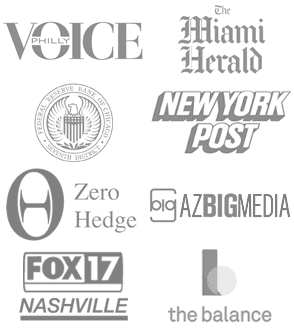The prospect of buying a home in Kansas continues to improve with affordable housing and attractive mortgage programs for first time home buyers in the Mid-West. As the housing market in Kansas continues to evolve in 2025, with median home prices around $250,000 and interest rates stabilizing at 6-7%, first-time buyers face both opportunities and challenges. The RefiGuide published this article to help Kansas first time home buyers maximize down payment assistance and affordable mortgage loans, home buying grants and HELOCs in 2025.
Top Kansas First Time Home Buyer Loan Programs in 2026

Made in Kansas USA
The Sunflower State offers a variety of programs designed to ease the path to homeownership, particularly through down-payment assistance (DPA) and incentives that reduce upfront costs.
These initiatives are crucial in a year where inventory remains tight in urban areas like Wichita and Kansas City, and rural affordability draws new residents.
Administered primarily by the Kansas Housing Resources Corporation (KHRC) and local governments, these programs target low- to moderate-income households, often defined as those earning up to 80-150% of the area median income (AMI).
According to recent data, over 2,500 Kansas households benefited from state housing assistance in 2024, a trend expected to continue.
This article highlights the top programs, including state-wide DPA and local incentives, with direct reference URLs. We’ll also explore eligibility, benefits, and two case studies to demonstrate real-world impact.
Who Qualifies as a First-Time Home Buyer in Kansas?
In Kansas, a first-time buyer is generally someone who hasn’t owned a home in the past three years, aligning with federal guidelines. Key eligibility criteria across programs include:
- Income Limits: Typically 80-150% of AMI, varying by county. For a family of four in Shawnee County, this might be $80,000-$120,000.
- Credit Score: Minimum 620-640, though some programs are flexible.
- Home Price Caps: Often $300,000-$400,000, depending on location.
- Education Requirement: Many mandate a homebuyer education course, available through HUD-approved agencies.
- Residency: Must occupy the home as primary residence.
These programs often stack with federal options like FHA loans (3.5% down) or VA loans (0% down for veterans), amplifying benefits.
Trusted State-Wide Kansas Down-Payment Assistance Programs
Kansas’s primary state agency, KHRC, oversees several initiatives funded by federal HOME Investment Partnerships Program. Here’s a breakdown with reference URLs:
KHRC First Time Homebuyer (FTHB) Program: This flagship program provides a 0% interest second mortgage for 15% or 20% of the home’s purchase price (up to $50,000 typically) to cover down payments and closing costs. It’s forgivable after 10 years of occupancy. Eligibility requires income at or below 80% AMI (except in certain counties like Johnson), completion of homebuyer education, and a minimum credit score of 640. Available statewide except in cities administering their own federal funds (e.g., Kansas City, Lawrence, Topeka, Wichita).
Reference URL: https://kshousingcorp.org/housing-partners/community-solutions/
HOPE Program by Federal Home Loan Bank of Topeka: Offers forgivable grants up to $12,500 (minimum $2,500) for down payments, closing costs, or repairs. Targeted at households up to 150% AMI, not limited to first-timers but ideal for them. Funds are distributed through member banks on a first-come basis; 2025 allocation was $4.9 million but fully reserved by mid-year. Retention period: 5 years.
Reference URL: https://www.fhlbtopeka.com/services-and-programs/community/turnkey/hope
Kansas Housing Assistance Program (via FHA): Provides up to 4% cash assistance as a grant for down payments and closing costs, paired with FHA loans. Open to first-timers statewide, with income limits at 115% AMI and home price caps.
Reference URL: https://www.fha.com/fha-grants?state=KS
These programs helped over 1,000 buyers in 2024, with similar projections for 2025 amid steady funding.
Top Local KS First-Time Home Buyer Incentives
Local programs, often HUD-funded, provide targeted aid in major cities. Here are key ones with URLs:
Wichita HOMEownership 80 Program: Offers grants for down payments and closing costs (up to $20,000 based on need) for purchasing newly constructed single-family homes in designated areas. Eligibility: First-time buyers with income at or below federal limits (80% AMI), must work with partner organizations like Wichita Habitat for Humanity. Homes built by Community Housing Development Organizations (CHDOs).
Reference URL: https://www.wichita.gov/419/Homeownership Apply via partners: e.g., Mennonite Housing (316-942-4848).
Topeka Home Buyer Assistance Program (TOTO – Topeka Opportunity To Own): Provides up to $5,000 in matching grants for down payments and as much as $30,000 for home repairs or rehabilitation. Aimed at low-income first-timers (below 80% AMI) purchasing within city limits. Partners with Housing and Credit Counseling Inc. (HCCI) for education.
Reference URL: https://www.topeka.org/housing-services/home-buyer-assistance-program/ Contact HCCI at 785-234-0217
Kansas City, KS Down Payment and Closing Cost Assistance (via CHWC): Through Community Housing of Wyandotte County (CHWC) and FHLB’s Affordable Housing Program, offers up to $21,000 in grants for down payments and closing costs. For first-timers at or below 80% AMI, purchasing in Wyandotte County.
Reference URL: https://chwckck.org/housing/down-payment-and-closing-cost-assistance-programs/ Additional local funds may apply via Unified Government.
Other notables include Lawrence’s programs (similar to Topeka) and Johnson County’s own incentives, but these three cover major population centers. Always verify 2025 funding availability, as federal grants fluctuate.
Kansas Mortgage Options and Additional Tips
Pair these with low-down-payment mortgages: FHA (3.5%), USDA (0% in rural areas), or conventional (3%). Lenders like Landmark National Bank offer additional 5% grants. Tips for success:
- Complete HUD-approved education early.
- Get pre-approved to know your budget.
- Factor in closing costs (2-5% of price) and property taxes (average 1.1% in KS).
- Monitor credit; free reports via AnnualCreditReport.com.
In 2025, with potential rate cuts, acting soon maximizes benefits.
Case Study 1: Sarah’s Rural Dream with KHRC FTHB
Sarah, a 29-year-old teacher in Salina earning $45,000 (below 80% AMI), dreamed of owning a $180,000 home but lacked savings. In April 2025, she applied for KHRC’s FTHB through a local lender. Qualifying as a first-timer, she received a $27,000 (15%) forgivable loan for down payment and closing costs. After education via HUD agency, she closed in June with an FHA mortgage. The loan forgives in 2035 if she stays. “It made homeownership possible without family help,” Sarah says. Her credit score rose post-purchase, enabling future upgrades.
Case Study 2: Miguel’s Urban Start in Wichita
Miguel, a 34-year-old mechanic in Wichita with $55,000 income (moderate AMI), targeted a $200,000 new-build in a HOMEownership 80 area. As a first-timer, he partnered with Wichita Habitat for Humanity in February 2025. The program granted $15,000 for down payment, covering gaps after his 3% savings. Combined with a conventional loan, he closed in May. Repairs were minimal, but the incentive stabilized his neighborhood. “The grant turned renting into owning,” Miguel reflects. By mid-2025, equity built amid rising values.
Kansas’s 2025 programs empower first-time buyers amid economic shifts, offering grants and loans to bridge affordability gaps. From KHRC’s statewide FTHB to local gems in Wichita and Topeka, resources abound—check URLs for applications. With preparation, like in our case studies, homeownership is attainable. Consult lenders or KHRC for personalized guidance; your Kansas home awaits.
FAQs for Kansas First Time Home Buyers:
What are the qualifications for first-time homebuyer grants in Kansas?
In Kansas, first-time homebuyer grants and assistance programs include HUD-supported offerings like the HOMEownership 80 Program and KHRC First-Time Homebuyer Initiative. You must not have owned a home in the past three years, meet income limits (often below 80% of area median income), make a minimum down payment (typically around $500 or 1%–10% of home cost), and complete homebuyer education. Some programs provide 0% forgivable loans or matching funds up to $5K for down payment and closing costs.
What is the minimum credit score to qualify for down payment assistance in Kansas?
Down payment assistance programs in Kansas typically require that borrowers also qualify for a mortgage. Most conventional mortgage programs require a minimum credit score of 620, although FHA loans allow for scores as low as 500–580, and USDA loans typically require at least 580 (though some lenders may require 620 if debt-to-income (DTI) is higher). Lenders may impose additional credit-based requirements for assistance eligibility.
How soon can first-time buyers get a HELOC or home equity loan in Kansas?
For first-time homebuyers using state or local programs in Kansas, home equity options typically become available only after establishing equity and occupancy. Most lenders require that you live in the home for several months to a year and build sufficient equity before approving a HELOC or second mortgage. Exact timing depends on program terms, appreciation, and lender policies.
What is the average age of a first-time homebuyer in Kansas?
While Kansas-specific age data isn’t publicly available, national figures offer insight—according to recent data, the median age of first-time homebuyers is 38, a historic high. It’s reasonable to assume Kansas aligns closely with this trend, as rising home prices and changing demographics have broadly delayed homeownership nationwide.
What is Kansas’s unemployment rate?
As of June 2025, Kansas’s unemployment rate was approximately 3.8%, slightly higher by 0.2 percentage points than June 2024, and still below national averages. The rate has remained unchanged at 3.8% through mid-2025, indicating relatively steady employment conditions statewide.
How many people rent vs. buy homes in Kansas?
In 2023, Kansas had a homeownership rate of approximately 68.5%, meaning about 31.5% of households rent instead of own. This indicates that nearly two out of three households are owner-occupied, with renters making up just under one-third of housing units across the state.
